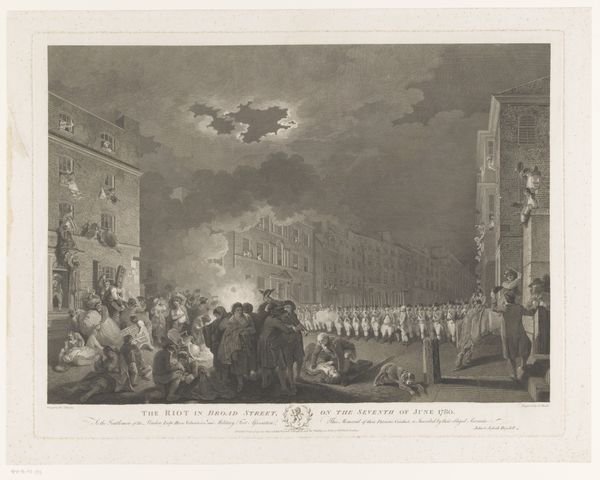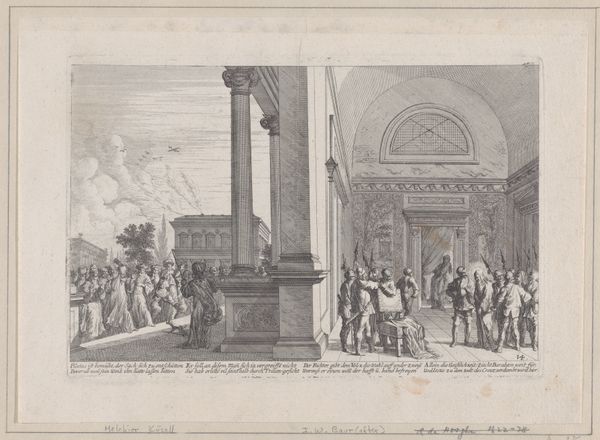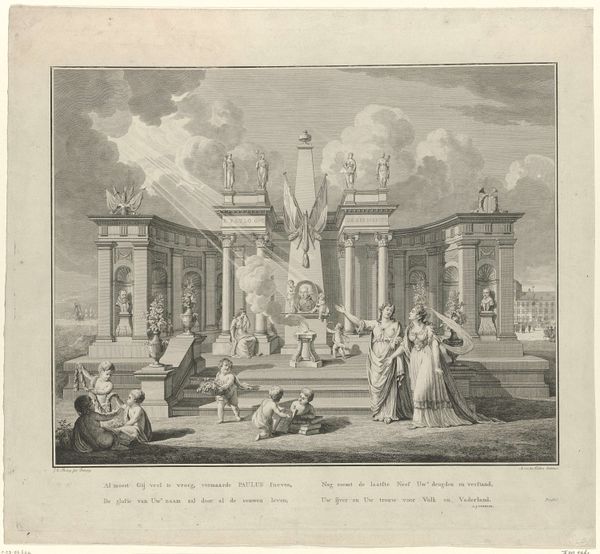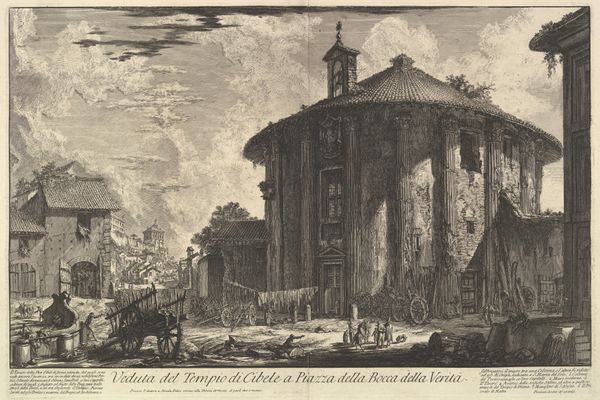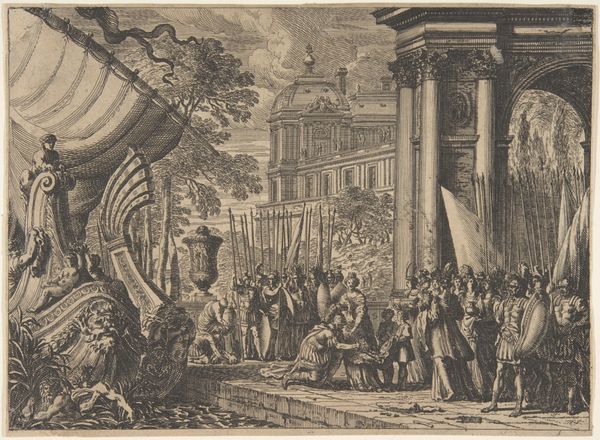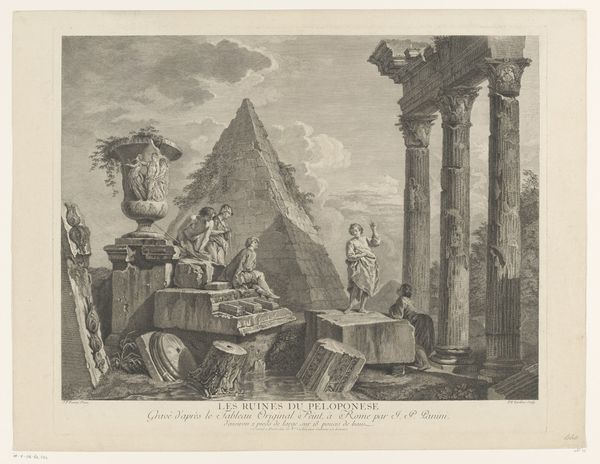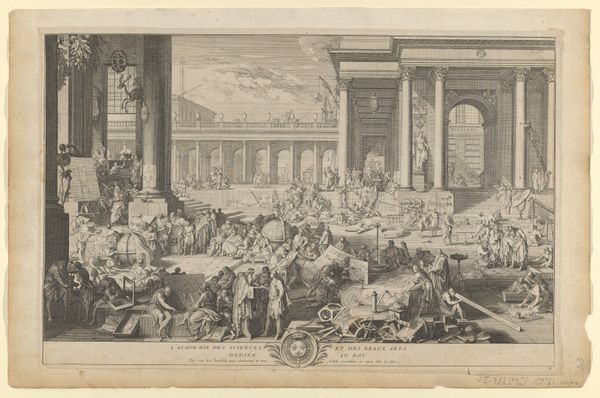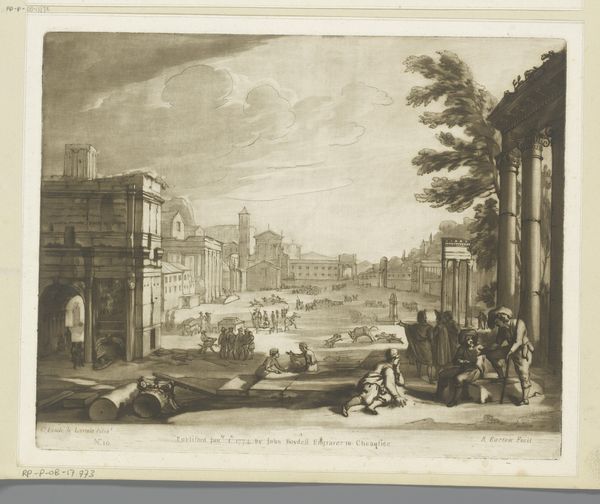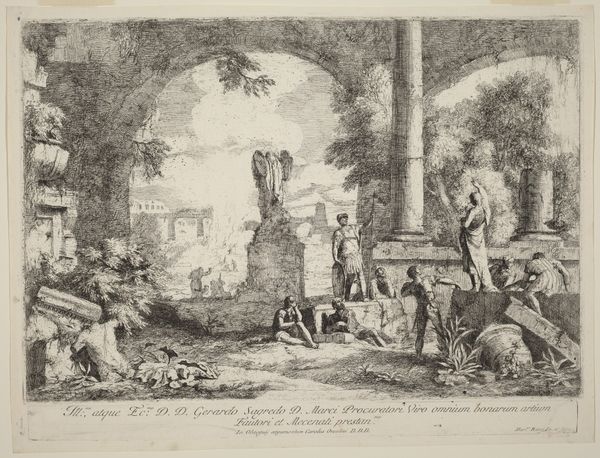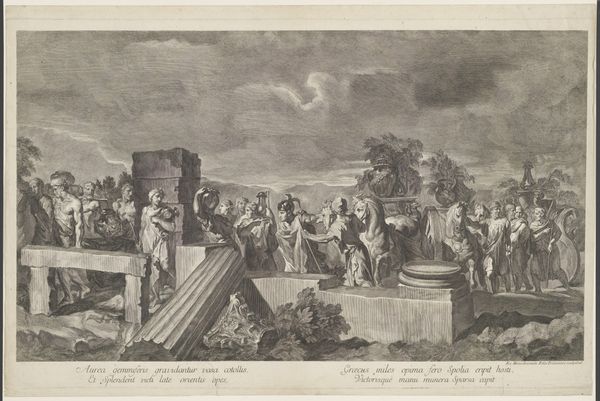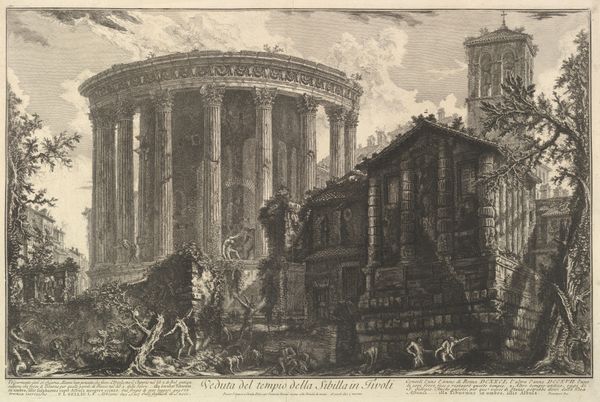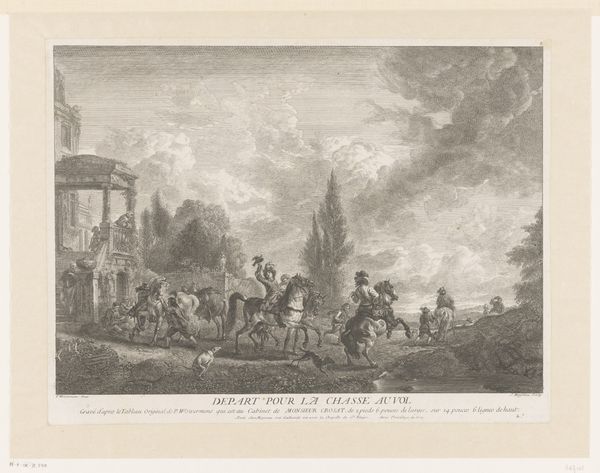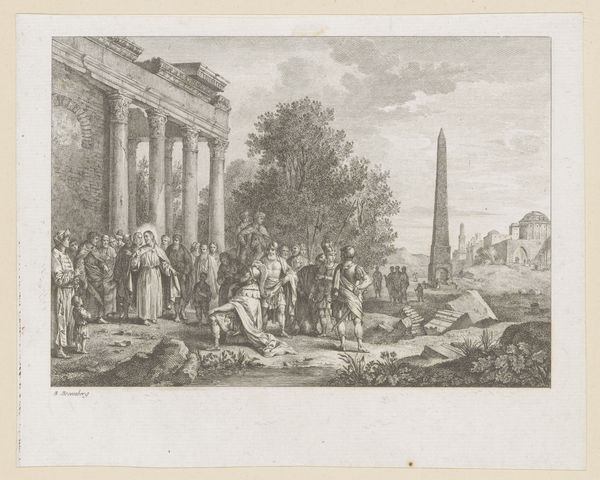
Temple of Isis at Pompeii (illustration to "Voyage pittoresque de Naples et de Sicile") 1776 - 1786
0:00
0:00
drawing, print, etching, engraving
#
drawing
#
neoclacissism
# print
#
etching
#
landscape
#
ancient-mediterranean
#
orientalism
#
history-painting
#
academic-art
#
engraving
Dimensions: sheet: 12 5/16 x 18 9/16 in. (31.2 x 47.2 cm) plate: 10 1/16 x 14 13/16 in. (25.6 x 37.6 cm)
Copyright: Public Domain
This print of the Temple of Isis at Pompeii, made by Edouard Gautier-Dagoty, is one of many that helped to fuel an 18th-century obsession with the ancient world. It's made using etching and aquatint, intaglio printmaking techniques that allow for fine lines and tonal gradations. The material quality of this print – its texture, color and form – plays a crucial role in communicating its message. The sharp lines and contrasting tones evoke a sense of drama and antiquity, emphasizing the texture of the ruins and the atmospheric lighting. The skilled techniques employed here reflect a tradition of meticulous craftsmanship. Yet, the print was intended for mass consumption, aligning it with the burgeoning print culture of the time. The production of such prints involved a division of labor, with specialized artisans contributing to the various stages of creation. While celebrating the glories of the past, these images also participated in the economic systems of their own time. Ultimately, understanding the materials, making, and context of this print allows us to appreciate its complexity and challenge traditional distinctions between fine art and craft.
Comments
No comments
Be the first to comment and join the conversation on the ultimate creative platform.
